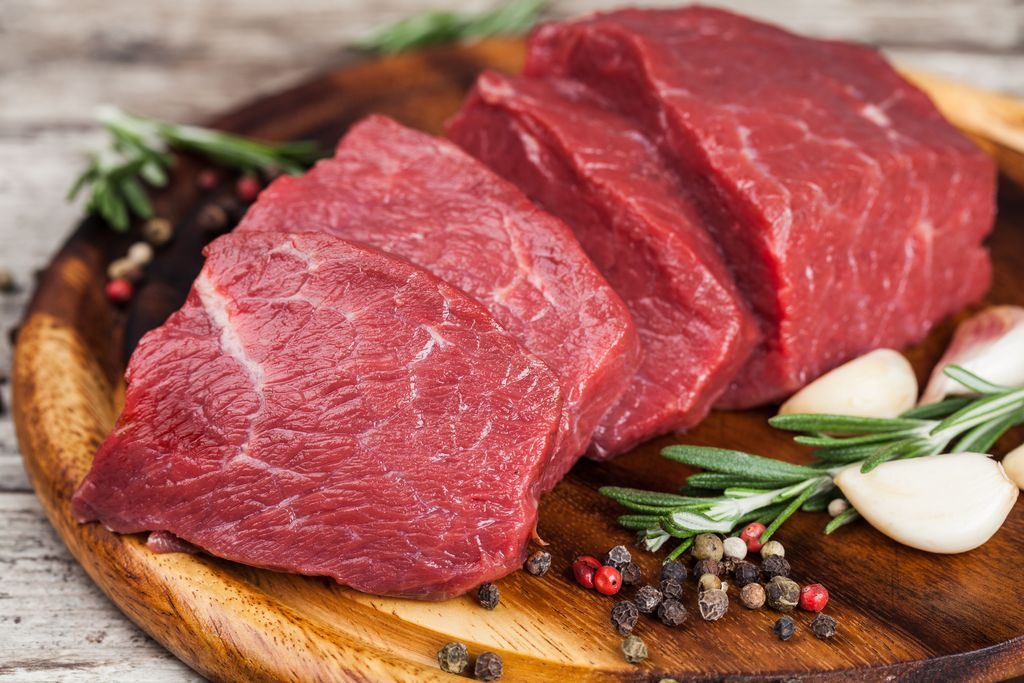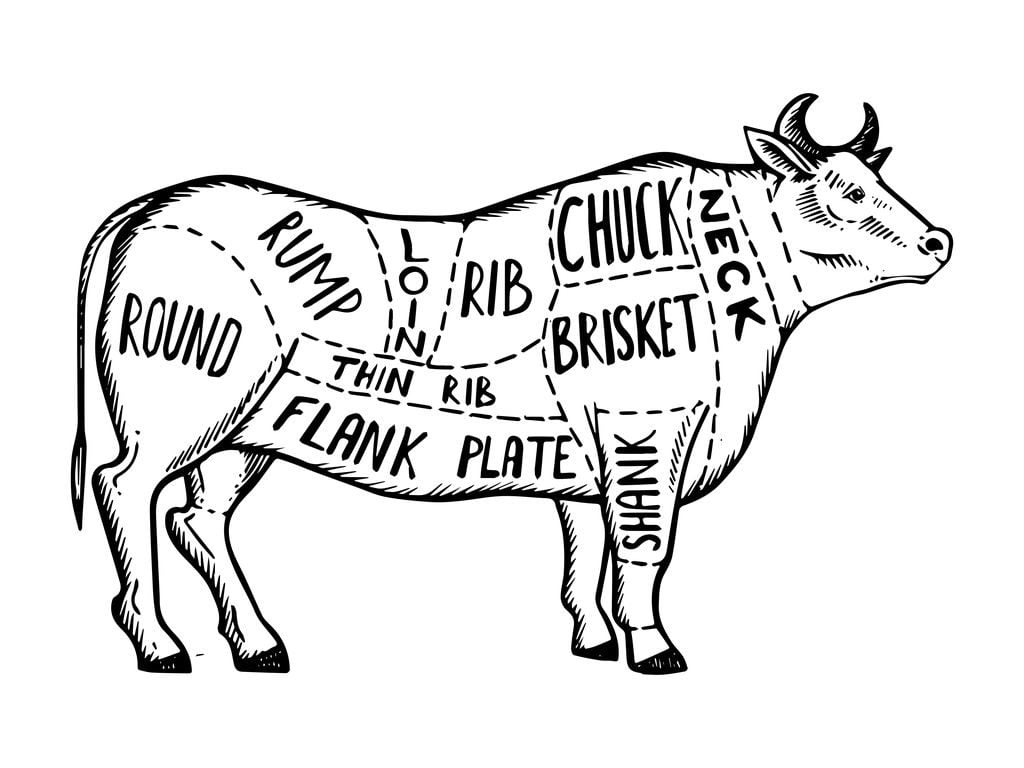Beef
Beef is packed full of protein and flavour. Good quality beef makes great burgers, meatballs, stews and stir-fries

Beef is the second most-consumed meat in the world. It can be used in burgers, meatballs, stews, stir-fries and many other dishes. It is sold both raw and cooked. Raw it comes, cubed, minced, steaks or in joints of various sizes.
Some beef products include beef jerky and sausages.
Beef can vary in both taste and quality depending on age, breed, diet and lifestyle of the animal. Not only that but it also matters what part of the animal the meat comes from. Knowing more about the differences in cuts of meat will help you chose what meat is best for your cooking!

Cuts of meat
Do you know what cuts are best for stewing and which are best for a stirfry? If not read on! It’s important to understand what you are eating and where it comes from.
Beef is divided into sections called primal cuts. Different countries and cultures make these cuts in different ways, in the UK the primal cuts are Sirloin, Rump, Round, Brisket, Flank, Chuck, Rib, Neck, Ox Cheek and Oxtail.
It’s also best whenever possible to buy free-range and organic beef as it means the animal has had a good quality of life.
Sirloin
The sirloin section is located behind the ribs. It can be sold in joint suitable for roasting or it can be cut into steaks. “T”-bone, Porterhouse and Entrecote come for this part as well. Steaks can be grilled, fried and used in stir-fries and barbecuing. Meat from this part is usually used in dishes like beef stroganoff.
Fillet (also called tenderloin) also comes from this area, fillet cuts are very tender and lean. They can be cut into steaks or a joint, perfect for Beef Wellington. Fillet cuts are delicious and also tend to be the most expensive.
Rump
Rump cuts tend to be cheaper then sealion and fillet, it’s slightly tougher but it is packed with flavour! It can be sold in joints or cut into steaks. Rump steaks are best cooked quickly, it’s good for frying, stir-fries, grilling or the barbecue
The Brazilian steak Picanha comes from this section.
Round
The round section starts slightly below the rump and includes the whole leg section. The meat from the round is very similar to the brisket and the neck, it has a low fat content and is quite tough as it gets the most work. Round meat is very flavourful but as it is on the tougher side this tends to be better suited to slow cooking like, stewing, roasting and braising.
Brisket
The brisket is located at the top of the front leg. The brisket is extremely flavourful, it’s usually sold whole and it’s perfect for roasting and barbecuing. It is also sometimes ground to make mince.
Flank
The flank section is the underbelly of the cow, meat from this section tends to be marbled with fat and very tender. It is commonly cut into hanger steaks which are long and thin.
Chuck
The chuck located at the top of the shoulder and just behind the neck. Meat from this area is marbled with fat and is moderately tender. It tends to be a more economical cut of beef. It is commonly referred to as a “braising steak”. It is commonly sold diced, cut into steaks or ground into mince.
Rib
The rib section is located behind the chuck. They are sold on the Bone, Boned or French trimmed. Ribeye and Braising steaks come from this section. The lower part of this section is called the thin rib and it is generally used for mince as its very tough.
Neck
Meat from this section tends to be tough but flavorful and is great for stews like goulash!
Ox Cheek
As the name suggests this cut is the hardworking cheek muscle of cows. It is a budget cut that will reward being cooked long and slow to make it tender. The many connective fibres will break down to form a thick gravy. It absorbs the flavours of braising liquid such as wine or ale well. Cooked it has a texture similar to brisket.
Oxtail
Oxtail is super flavourful and is one of the cheapest cuts. Its sold on the bone and is usually cut into sections. The meat tends to be tough so it’s perfect for stewing or braising.
Recipe suggestion: Lasagna, Bolognese sauce (ragú)
Nutritional information of beef
Beef is categorised as red meat – along with lamb and pork – a term used for the meat with high levels of iron.
Not all beef products are the same but in general, beef is high in protein and fat.
It is important not to consume too many highly processes products. It’s best to opt for high-quality, leaner cuts.
The protein in beef also contains amino acids which help your body to grow and support itself. Protein also helps your body maintain muscle mass.
The fat content varies depending on what part of the meat is taken from, the breed, gender, age and what the animal is fed. The fat content of beef is mostly saturated and monounsaturated fats.
Beef has good amounts of Vitamin B12, Zinc, Selenium, Niacin, Vitamin B6 and Phosphorus.




